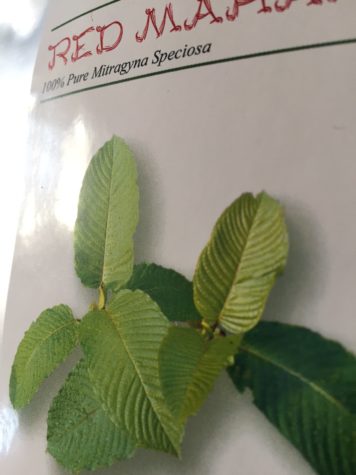 I used to take opioids for pain. Every day. Numerous times a day. I didn’t abuse the drugs; I was prescribed them for legitimate reasons and I used them as directed.
I used to take opioids for pain. Every day. Numerous times a day. I didn’t abuse the drugs; I was prescribed them for legitimate reasons and I used them as directed.
Still, a human body becomes reliant on narcotic drugs like this, and over time it takes more for the same effects. It’s simple physiology. The same pills that can help a person manage pain can also ruin or even end that life.
Meanwhile, the process of getting a prescription for opioids is stressful and sometimes embarrassing: For years I had to pee in a cup regularly so the pain clinic could make sure I was taking, rather than selling, my pills. It was also expensive. Not only did I have to have an office visit at the clinic every two months, complete with co-pay, but one of the meds, before I fulfilled my insurance deductible, cost me $400 a month.
I got tired of the circus and the expense and decided to stop taking the damn things, and so I reduced my intake a little each week. My body fought back and my pain grew worse than I remembered it being before the drugs. I got down to half of my daily dose, but I struggled to go lower. I wasn’t sure I could do it. Plus, I was hurting.
Things have changed drastically since then. Now, I take a half or a single pain pill maybe twice a week—and only when truly needed. It took me about 10 days to get to (basically) zero, something that drug addicts and their doctors and families can’t imagine is possible. I used a completely natural substance, a ground up plant, to get through the withdrawal, and it worked amazingly well. I still take it each day because it eases pain and anxiety, both of which have plagued me for years.
It’s called Kratom, or Mitragyna speciosa. You may have heard of it; it was in the news just this week as Illinois became the latest state to consider a full ban of it. (West Virginia, Mississippi, and Kansas are on the same path.) It’s a tropical plant from Southeast Asia, a close relative to coffee, that can, for now, be purchased in various forms from online vendors and herbal shops in the States and Canada. Ingesting different parts of the plant has different effects, as do different strains and doses. The right combination can be good for focus, energy, anxiety, and pain. The primary active ingredients are alkaloids called mitragynine and 7-hydroxy-mitragynine, and while they tap some of the same brain receptors as opioids, Kratom’s components are not themselves opioids: They are both actively and structurally different. (Chocolate, coffee, and exercise also hit these receptors, btw.)
There’s a great debate over Kratom’s addictive potential. Millions taking it regularly plus the (albeit limited) researchers who have studied it say if it is habit-forming, it is certainly less so than narcotics—with less severe withdrawal effects. Though some consumers report having trouble letting go of it, many others are able to limit or reduce their use with ease.
For me, and for many others, Kratom is self-limiting: If I take more than usual, I get a headache. Other people throw up. I learned my lesson quickly and haven’t bumped up my minimal dose since. I have no urge to do so—a feeling I would recognize after years on opioids. Plus, the stuff tastes terrible. (You can make tea with it, which isn’t too bad. But it’s not like sipping a nice Earl Gray.)
Despite media and government-official freak-outs insisting the herb will kill you, so far it appears there are no deaths in the United States proven to be the result of a Kratom overdose. That’s not just according to the American Kratom Association, but to independent scientists/toxicologists who have reviewed cases. Where there are reports of “Kratom-related” illnesses and deaths, other substances—clearly dangerous—and/or an underlying illness, are almost certainly to blame; the herb’s role in the mix is questionable at best. Most recently, a medical examiner’s report blaming Kratom (solely) for the death of a body builder in Georgia led journalists to investigate: Their efforts revealed “sloppy” and incomplete state reporting that very likely overstated Kratom’s involvement. The same was true of other similar cases in that state.
But U.S. government regulators want to label Kratom a Schedule I drug, right up there with heroin. The initial movement to do so—a call for an emergency listing by the DEA last summer—stalled after an explosive backlash by thousands of Kratom advocates and some supportive members of Congress. But the fight to keep it legal continues; in November FDA commissioner Scott Gottlieb, in a public health advisory, pointed to “clear data” on Kratom’s deadly potential while states are now lining up to ban it. Advocates expect a long battle ahead.
For perspective: If Kratom were a Schedule I drug, sipping my herbal tea to combat morning pain that might otherwise keep me in bed could land me in jail for five to 20 years. I’d get way less time for my fourth offense drunk driving. (Note that, despite its legal status in some states, marijuana is also a Schedule I drug. Opioids like Fentanyl and Oxycontin, on the other hand, are Schedule II—considered less dangerous. Something is very wrong with this system.)
But there is little to no real evidence of Kratom’s danger—even at high doses studies show it does not depress respiration as many claim it does (and as opioid painkillers can do). Comparing it to heroin is ludicrous. People in parts of Asia have been gnawing away at this plant for centuries for all kinds of health and mood reasons. Those benefiting from its effects deserve for Kratom to be studied closely, without a rush to judgement.

So far at least one drug company, plus some pioneering university researchers, are looking at Kratom’s active ingredients in hopes of better understanding their activity with an eye toward better, safer painkillers. But there hasn’t yet been a controlled clinical trial to test the herb’s safety and efficacy. Interested researchers have said in fact that getting funding to study the substance is tough, and if Kratom becomes a Schedule I drug, such research would be slowed to a crawl by a burdensome permitting process. (It would also mean any studies already under way without said permits would be shut down.)
With the opioid epidemic screaming over our collective shoulder, one would think potential alternatives would be embraced and fast-tracked through testing, with results shouted from the rooftops. Kratom could help millions of people get off hard drugs, and millions more deal with pain and anxiety; should there not be a flurry of research activity and support?
Is it in part because bad drugs are such big business? The unsavory links between narcotics and governments and the drug industry aren’t just the stuff of TV; plenty of official hands are sticky. I’d posit (as many others have before me) that those in the biz don’t really want safe and relatively inexpensive alternatives to these products. When it comes to drugs, human lives often lose out to other measures of “value.” I might be jaded. Or just a realist.
Regardless, as someone with chronic pain, I’d like alternative painkillers to get thoughtful scrutiny rather than an immediate leap to high-crime status. I’d also like to continue to ingest a natural substance that helps me, and hurts no one, in the privacy of my own home without worry; the alternative, to go back to those dangerous opioids I finally kicked, is a huge step in the wrong direction.
Those fighting to keep Kratom accessible agree it needs to be investigated thoroughly and even regulated to protect consumers from poor or mislabeled product. And no advocate would argue against making sure it does no harm over the long term. Absolutely. Study the hell out of it.
As with marijuana, Kratom may ultimately be shown—if researchers are given the chance to rigorously test it—to be safer than many legal substances we take in regularly, like alcohol, nicotine, and, hell, sugar. And for those who have found no choice but to pop synthetic, clearly addictive and potentially deadly LEGAL pills daily to manage pain, it could be a life-saving grace. Why in the hell wouldn’t we all want to find out?
Top photo by David Michuda on Unsplash
Bottom photo by the author
Here in Ohio the opioid fight has just spawned a law that restricts docs from prescribing pain killers (the addictive kind) for more than a week. I just had surgery and luckily can limp through with some sleepless nights without a prescription pain killer. However, several years ago I had a knee replacement and would have been in agony.
I hear you! We truly need better, safer painkillers as opioids fall out of favor (for good reason). Let’s hope even those NOT in pain (usually the ones screaming NO to drugs like marijuana and Kratom) see the light.
“Bravo”, truly a well written piece that is both enlightening and observant! I have lived in Kratom’s grace for a few years now and without it would have a much lower quality of life. Both physically and mentally I was able to use it to get off disability and kick some very nasty habits at the same time. it has even curbed my addiction to Nicotene to almost nothing. This entire mindset that “Drugs,(synthetics) are Medicine; and Medicine,(plants) is drugs”, has only occured in the past 100 years or so. ironically with the rise of the pharmaceutical industry. Thousands upon thousands of years prior we clearly knew to turn to medicinal herbs to safely and potently heal. So in the name of all that is true and right, thank you for your article.
Always great to hear more people’s stories about their path and when it crossed in to Kratom. Good to hear you are finding relief. Quality of Life and wellbeing are both laudable goals to seek.